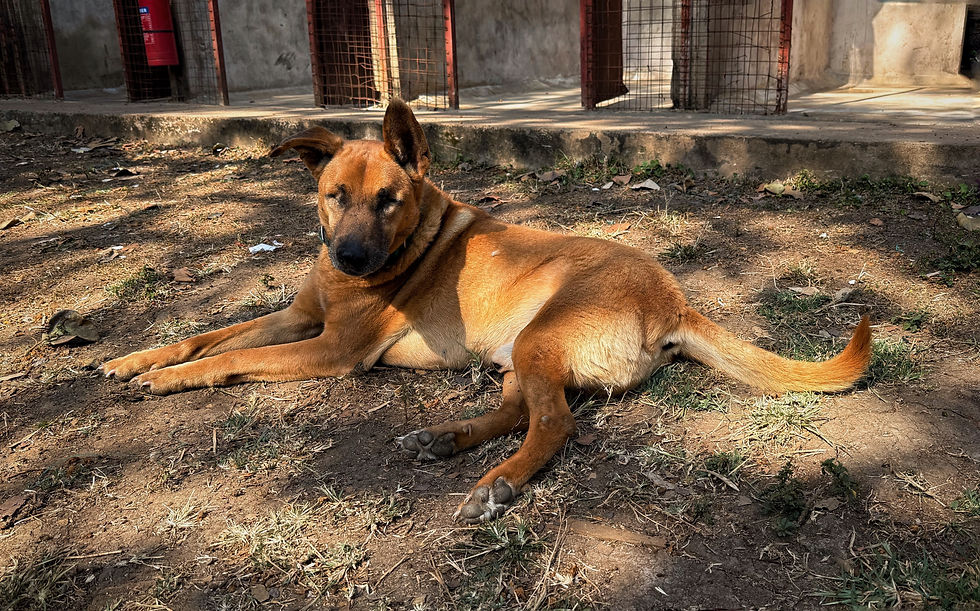Lady of Stone Town
- Arnold Plotnick

- Oct 22
- 4 min read
A Most Resilient Feline
In 2021, after completing a vaccination campaign with Mission Rabies in Tanzania, I took a short flight to Zanzibar, the tropical island off the coast, for a few days of rest and relaxation. Zanzibar is known for its beautiful beaches, and for being the birthplace of Freddie Mercury, Queen’s lead singer. I spent 3 days enjoying the beach, and three fascinating days in Stone Town, the island’s biggest city.
In February of 2024, I went back to Stone Town — not just as a traveler and photographer, but as a veterinarian. I was volunteering with a Canadian charity that had teamed up with Mama Paka, the local cat shelter, to sterilize some of the numerous street cats that roam the city.
The group, Fondation Aide Vétérinaire Internationale (FAVI), is a Quebec-based nonprofit that runs animal projects abroad. I’d already joined several international missions focused mostly on dogs, and I loved the work. But anyone who knows me knows I’m a cat guy. I founded Manhattan Cat Specialists, a feline-only hospital in New York City, and ran it for years. After retiring, I’d been itching for a cat-centric project overseas. So, when FAVI’s powerhouse leader, Dr. Marie Simard, put out a call for volunteers for a sterilization campaign in Stone Town, I jumped at it.

On my second day there, my last surgery of the afternoon was one I’ll never forget. A young female cat was brought in with an enormous abdomen.

At first glance, we thought she might be pregnant — common enough among the street cats we were treating. But when I opened her up, I discovered something far more dangerous: a massive pyometra - a severely infected uterus. Every vet has their own “biggest pyo” story. Leave it to Zanzibar to hand me mine, after thirty years of practice and five years into my retirement.
The surgery was grueling. At one point, the power cut out, leaving me to work by the light of a window, with a headlamp hastily strapped to my forehead.

The infected uterus was so heavy and fragile that I had to call in Naftal, a trusted technician, to scrub in and help me lift it out. Sweat poured down our faces as we worked, and a small crowd gathered, murmuring at the sight of this grotesque organ.

Somehow, against all odds, the cat survived.
When we talked about naming her afterward, my first tongue-in-cheek suggestion was “Sepsis,” a nod to a fate that wouldn’t have been surprising, given the state of her uterus. As her condition stabilized and she began to rally, the name softened to “Lady Sepsis.” And once it became clear she had the strength to pull through, we dropped the last part and simply called her “Lady” — a dignified name befitting her resilience and quiet grace.
When I left Zanzibar at the end of the project, Lady was still convalescing at Mama Paka — frail, but fighting.

I honestly didn’t know if she’d pull through. Fast forward to this summer. I wrote to Sarah, the remarkable woman who runs Mama Paka, to say I was coming back. She replied, “Do you remember Lady?” Of course I did! I assumed that once Lady had recovered, Sarah would have released her back to the area where we picked her up, which is standard practice. But Sarah confessed she’d grown so attached to her that she broke her own rule about re-release. Lady had become a permanent resident of the shelter.
Then Sarah sent me a photo.

I could hardly believe it. Lady was unrecognizable: twice the weight, her coat clean and fluffy, her eyes bright. The frail, skeletal patient I had lifted off the surgery table had transformed into a healthy, confident cat.
A few weeks ago, I returned to Stone Town (I’m admittedly obsessed with the place), where Sarah has since moved Mama Paka into a new location after being forced to leave her old space. I went out to visit Sarah, got to meet the 36 resident cats there, and finally reunited with a very special cat: the new and improved Lady.

For me, Lady’s story is more than just a veterinary war story or a lucky survival tale. It’s moments like this that remind me why I keep doing my Mission Rabies vaccination projects and working with FAVI and similar organizations: the resilience, the second chances, and the quiet bond between people and animals that softens the harsh edges of the world, even in the most unexpected places. When parents or grandparents ask me what to say to a young person who wants to be a vet, I tell them there are countless reasons to encourage it — not least being able to have unforgettable experiences that lead to stories like this. Tales like Lady’s stay with you, reminding you that this work isn’t just a profession. It’s a calling. And if it calls to you, answer it, and don’t look back.



Comments